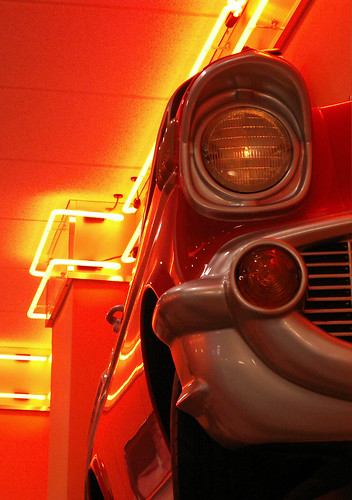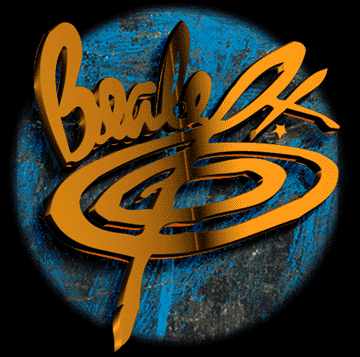
MEMPHIS BLUES & BBQ'S TOUR
- By: Mike Marino
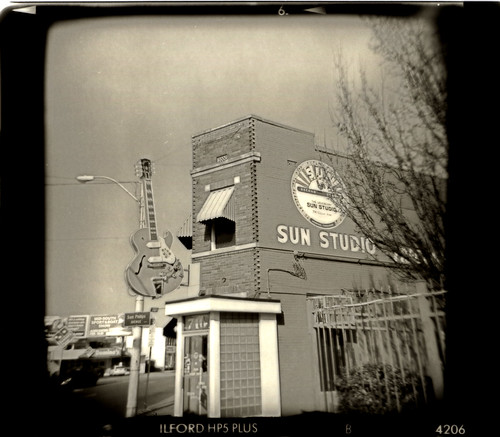
Jukebox blues and BBQ's explode with a rockabilly backbeat on the nightime neon of Beale Street. Riverboats glide majestically along the Memphis skyline, marking twain as they cut a path up and down the Mississippi River past the ghosts and history of civil rights and rock n' roll. Memphis, Tennessee named after the Egyptian City of The Dead, is a myriad of ghosts, music, southern fried history, entertainment and cuisine. Riverboat and carriage rides, riverfront parks, festivals, Graceland and the famed Sun Studios. It's also home to the Lorraine Motel where Martin Luther King was assasinated in 1968 and is now home to the Civil Rights Museum. Memphis rocks, and Memphis rolls to beat all it's own.

Got Elvis? Memphis damn sure does and every year 600,000 of the Elvis faithful hound dog hipsters lock n' load for the Presley Pilgrimage for the hip swiveling, lip sneering experience of Graceland and all things Elvis. Graceland, originally a farm during the Civil War era, was owned by a Memphis newspaper publisher and named after his daughter Grace. The Elvis Mansion itself was built in 1939 and purchased by The King in 1957 for $100,000 from the local YMCO who had just purchased it for $35,000! The King always was generous.
Elvis lived there until his death in 1977 from a drug overdose. It was officially opened to the public in 1982 and declared a National Historic Landmak in 2006. Public tours to feed the frenzy include the mansion where you can bungle through the Jungle Room with it's bunker like ambience, the TV room as a tribute to the vast wasteland of the tube, and the shooting range, not to be confused with the TV room which has seen it's share of gunfire in the past!
The museum houses artifacts including a sparkling array of Las Vegas jumpsuits with liberal doses of Liberace flair and flambouyance, and enough gold records to fill Fort Knox to overflowing. The car museum has a cornucopia of pink Cadillacs, miscellaneous other cars,and two wheeled hellion motorcycles. Souvenir shops dot the Kingdom with Elvis this and Elvis that. The upstairs portion of the mansion is as verboten to the public as a controlled substance, for that is where the King overdosed in the bathroom on an "all you can eat" buffet of pharmacological entrees. They hate to remind the public of that. Out of sight, out of mind. The grounds also have two jet airliners, the Hound Dog and the Lisa Marie. Elvis himself is buried on the grounds inside the Meditation Gardens where the King can finally rest in peace in that big Vegas showroom in the sky!
While visiting Graceland there are numerous lodging options but you may as well go Elvis all the way. The Heartbreak Hotel adjoining Graceland will allow you to sleep in an Elvis appointed room, zebra stripes and all if you wish, and no, the deskclerk does not dress in black. Hardy happy campers and RV afficianado's can pull up and park it at the Graceland RV Park just behind Heartbreak Hotel.
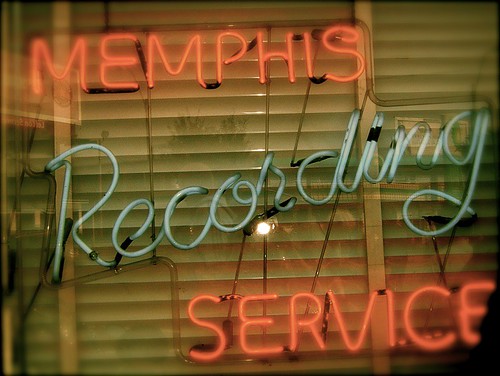
No trip to Memphis would be complete without a visit to Sun Studios, the Vatican of rock n' roll where Pope Sam Phillips cranked out a brand new sound, the Memphis sound that was an inbred crossbreed of southern blues, folk and country with a dash of gospel. Originally called Memphis Recording Service when Sam opened it's doors in downtown in 1950, little did anyone know at the time that this new sound would burn rubber on the pop culture quarter mile drag strip, and go from Bing Crosby to rock n' roll in just under 10 seconds.
Rcording mostly "race" acts at the time, 1951 is considered the dawn of the rock n' roll revolution. That was the year that Sam recorded a groupd called the Delta Cats that featured a young piano player and DJ from Clarksville, Mississippi, Ike Turner. The song recorded was "Rocket 88" and is considred the grandaddy Caddy of rock n' roll giving birth to a new musical genre and opening a Pandora's box of raucous rockabilly with a Memphis backbeat.
Eventually musicial stray cats from across the region made their way to Sun Studios, people like Presley, Perkins, Cash, Orbison and the Killer, Jerry Lee Lewis lighting up the sky with great musical balls of fire! The studio began to outgrow it's usefulness in 1958 and couldn't accomodate the vast numbers of musicians who wanted to record there, so by 1960, Sam shut the place down and it wasn't until 1985 that the castle doors reopened for the famed Class of '55 recording session that included Johhny Cash, Carl Perkins, Roy Orbison and Jerry Lee, and in 1987 Sam had the studios refurbished and reopened it as a tourist attraction and working studio.
Sun Studios can handle individual or group tours and the guides take you back in time aboard a nostalgic magical mystery tour that makes the past come alive. In the recording room is the same microphone that Elvis used to record "That's Alright Mama" in 1954 and makes a great photo op prop for the scrapbook. Artifacts from the early Sun days fill the building and there are Elvis artifacts on display on loan from the Presley estate. Don't forget to check out the old recording equipment and the "Rocket 88" records in the display case. Hungry? Well, that's alright mama, they have a snack bar and the gift shop has music, video's, shotglasses, t-shirts and sweatshirts all emblozoned with the famous Sun logo. Sun Studios is located at 706 Union Street and can be reached from Graceland aboard a shuttle bus for convienience although there is plenty of free parking in the area.

Sun Studio's may have been the beat of Memphis, but Stax Recording Sutdio was it's rythym and blues soul. Stax began it's orbit in the music galaxy in 1957 as a small record shop specializing in soul music inside the majestic Capital Theater in downtown Memphis, but by 1959 they came of age as a full fledged recording studio, the battle lines were drawn, and once again it was the battle of the north and south. Out of Detroit, Michigan, people across the nation were dancing in the streets to a Motown beat with the sounds of Hitsville, U.S.A. Now south of the Mason Dixon line it was Stax that counter attacked and led the charge with Soulsville, U.S.A.
Stax piled up an impressive number of stacks of wax for radio platter chatter and it's roster of artists was equally impressive. Soul giants such as Isaac Hayes, Otis Redding, "Wicked" Wilson Pickett, and Albert King to name a few recorded at Stax, and one group became indelibly linked to the Stax legacy, Booker T. and the Memphis Group. The name was eventually shortened to Booker T. and the M.G.'s.
Music wasn't all they recorded at Stax. Comedians Bill Cosby, Richard Pryor and the incomparable Moms Mabley turned out an impressive array of vinyl laughs, jokes and bits.
The times were a changing. The economic boom turned into a bust and the cards were stacked against Stax forcing the company into bankruptcy in 1976. By 1989 the old building was torn down. In time a group of investors wanted to rebuild the Stax studio as a museum. A Memphis musical Phoenix rising from the ashes. Although the original builing was gone, an exact replica of the original studio was built in 2001 on the original historic site, and opened to the public in 2003 as The Stax Museum of American Soul Music.
The Stax Museum houses 17,000 square feet of historic music industry artifacts, interactive exhibits, films, memorabilia and galleries. It is also the only soul music museum in the world so only fitting that it pay homage to Motown Records, Muscle Shoals and other soul labels. Two of the more interesting items on display include Isaac Hayes' 1972 peacock blue Caddy and the original Soul Train dance floor! Classic Stax wax is also available along with soulful souvenirs and gifts in the Satellite Record and Gift Shop. The legacy of Stax is alive and well and the museum is located at it's original location at 926 E. McLemore at the corner of College Street.

Bodacious BBQ and down and out blues are the entrees of choice to feast on when visiting Beale Street, ground zero in Memphis for shopping, nightlife and down south cuisine to tempt even the northenmost of palates. Today this nearly 2 mile stretch of concrete that begins at the Mississippi River is one of the most visited streets in America by tourists from around the world. Once as tawdry as San Francisco's Barbary Coast with a plethora of brothels, gambling and it's fair share of gunfigts, has been revitalized with shops, restaurants and enough festivals and outdoor concerts to float a riverboat.
Beale Street was first developed in 1841 and by the Civil War was a one time headquarters for General U.S. Grant way down south in Dixie. After the Civil War ended and into the 1940's traveling black musicians made there way to the tiny clubs to entertain and many planted roots in this cradle of American music as it was being developed. W.C. Handly was asked to move to the area in 1905 to be a music teacher and he also is responsible for writing "Memphis Blues" and "Beale Street Blues". He taught the greats and there is a wonderful statue to honor the Handy Man. By the 1940's, the Memphis Sound was taking form and shape thanks to performers who played the area such as Louis Armstrong, Muddy Waters and B.B. King.
The Sixties brought change to the country and Beale Street was not immune as it deteriorated rapidly and was soon not a place any God fearing citizen wanted to venture into without a fully armored tank, but by 1977 it was officially named the Home of the Blues by an act of congress and full tilt boogie revitaliation began in earnest in the 1980's.
Beale Street today rivals the French Quarter in New Orleans for sheer energy and many of the clubs stay open after hours until at least 3AM and some until 5AM just in time for a Memphis sunrise to start the day all over again. The summer season kicks off each year with annual Beale Street Music Festival the first weekend in May at Tom Lee Park at the end of Beale Street on the mighty Mississippi.
There's much more to do when doing Memphis including the Civil Rights Museum, the Memphis Zoo, carriage rides through town, guided tours and private tours, and if you want to Huck Finn it you can take a leisurely riverboat ride on the Big Muddy. Getting to Memphis by planes, trains and automobiles is easy and you can cheap it on a Greyhound for a truly blues experience! So blues and BBQ's, Memphis rocks and Memphis rolls and no wonder it is considered the birthplace of rock n' roll and the home of the blues!
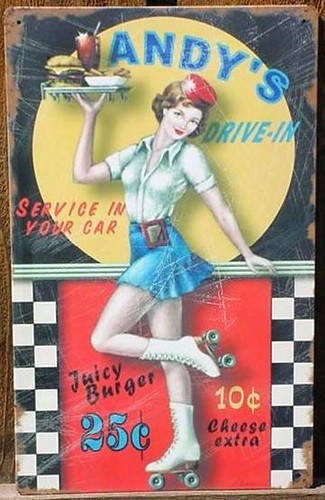

Classic Cars, Rock n' Roll, Elvis, Drivein Movies & Route 66! Kerouac, The Beats, Haight Ashbury, Easy Rider & Vietnam!

The Roadhead Chronicles goes from the Cold War Fifties Pop Culture of classic cars and rock n' roll to the spaced out Spare Change Sixties of Vietnam and Hells Angels. Not the usual look at the era, instead It's written by someone who lived it and spent a life of being on the road from his beach bum days in Honolulu to the glitz and dangers of the Sunset Strip in LA, and his purple hazed and double dazed days in North Beach and the Haight Ashbury in San Francisco. The Roadhead Chronicles also looks at the history of Route 66, Roadside Neon Culture and old diners and dives!

Mike Marino writes in an offbeat and irreverant style with a beat and a cadence that is all his own. His writing style has been compared to John Dos Passos, John Steinbeck and Terry Southern and one reviewer likened him to Frederick Lewis Allen on acid! Readers and critics call the book "wickedly wonderful", "delightfully weird" and "automotively sexy."!!
